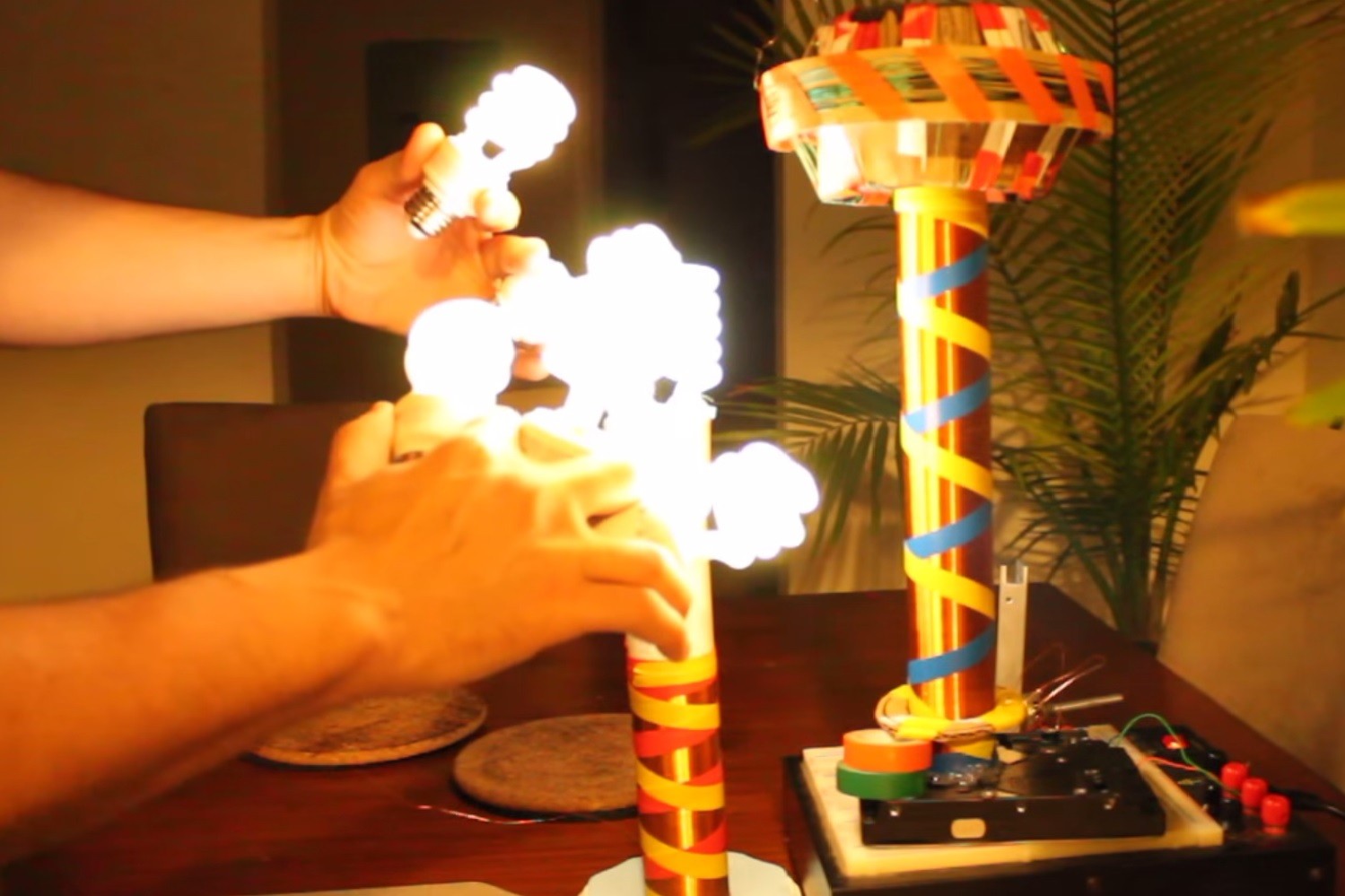How does a solid state Tesla coil work?
TeslaTronix Tesla Coil Schematic / Circuit Diagram
Single Transistor solid state Tesla coil
Reference: Wikipedia- Blocking oscillator.
- DC voltage is fed into the positive and negative portion of the circuit.
- This V+ line breaks off into a node which consists of a resistor to the base of the transistor, and the input of L1 (primary coil).
- The current from V+ likes to flow through the path of least resistance. The output of L1 is fed into the collector of the same transistor.
- When Voltage if first applied, it will attempt to first flow through the L1, but the transistor is currently in its OFF state, so current is then forced to flow to the base of the transistor.
- When current hits the base of the transistor, the collector opens, and a burst of current will now flow through the L1, out the emitter of the transistor.
- Again, current always follows the path of least resistance, so no more current flows to the base of the transistor due to the resistance, and the base closes.
- When the base closes, current will no longer flow through L1, and then current is again forced to flow through the resistor to the base of the transistor.
- The process repeats itself at 550,000 times per second or 550kHz- 1.5Mhz. This can be changed with tuning capacitors and transistor types.
- These output voltage pulses are multiplied by the ratio of the primary to the secondary coil (L2), as these pulses travel up the secondary coil
- All this energy then breaks out of the end of the wire of L2 as wireless Tesla energy- an expanding and contracting (pulsing) electromagnetic field of sorts.
- By placing a toroid (a large metallic sphere, or lots of windings of wire tied together to ensure a voltage difference of 0v across it) that energy becomes stored (as a capacitance) and broadcasted as usable power.
The connection for the base to the bottom end of L2 is necessary for tuning, and the diode(s) (this circuit can function with one diode) protect the circuit. A LED can also be used in conjunction with a diode to denote power through the circuit. Wireless Tesla energy can be demonstrated with several LEDs in series with a resistance, or with any type of florescent tube.

Hi,im not a native english speaker…So i’m trying to understand this,but actually i can’t…Im doing it for a physics project,so i need to understand how to make the “board”….could you send me or email me some info[if it’s written it’s better for me,cause it easier to me to read and understand that trying to understand what are you saying quickly]…Thanks!
PD:
Im in 4th semester of high school (4th semester xD)
The schematic is at the beginning and the end of this video. Cheers!
Hi,
I love the simplicity of this circuit!
What I find interesting is the absence of a HV capacitor. If you attach a 12v battery to this circuit, only 12v will be pulsed into the coil, right? While in ordinary Tesla Coils, the input is stepped up to 20.000v or more and stored in a HV capacitor or MMC before entering the coil.
I too am a Tesla aficionado, but one thing has always perplexed me. Why is everyone driving their Tesla coils at the resonance of the primary winding? This is not the operational theory presented in his patents, lectures nor his research notes. In a primary resonating coil, this is just an air cored step up transformer.
Correct, however this method of construction is the most simple way to demonstrate wireless transmission of power. The goal of this project is to keep people interested in the sciences and Tesla in general. The end results for cost, time and effort are well worth it for the first timer(or the avid Tesla enthusiast) looking to foretaste; peek into and play with wireless transmission of power.
The high-but-not-so-high (AM band) frequencies these coils operate at more efficiently transfer current through the air than many traditional set ups that use more input power.